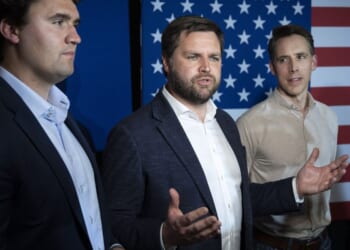It sounds so seductive — a state where more than two-thirds of its power supply comes from “clean sources such as solar, wind, and geothermal.” It’s a state whose lofty goal is to “further integrate our grid with the greater West through regional power markets [so] we will be able to share energy in a way that results in a more reliable grid.” Keep that last statement in the back of your mind as you read on.
California Governor Gavin Newsom’s recent Wall Street Journal op-ed points out a lot of things. However, the omissions are the most telling: Golden Staters pay the second-highest electricity rates in the nation, behind only Hawaii. They’re sitting at double the national average despite using a resource that is supposedly free. As the Washington Examiner observes, “Electricity is not just an isolated sector of the economy. Energy costs are borne by residents with air conditioning and other household appliances, but also by manufacturers, distributors, software developers, and anyone who works in an office. Energy literally touches every aspect of our economy. Higher energy prices mean lower economic growth across every sector.”
We should not forget the debilitating pains California went through just to get to this point. After the state prepared for yet another summer of rolling blackouts in 2021, I wrote about California’s dependence on solar energy, “Ironically, the problem tends to be that there’s too much of a good thing: an overabundance of solar-produced energy during the early afternoon causes fossil fuel suppliers to the grid to shut down or curtail their plants. Unfortunately, these plants have difficulty ramping up when needed to address the shortage in the late afternoon and evening when workers are returning home and wish to crank the air conditioners back up.”
While the state has been working on battery storage over the past four years for this purpose, that’s a more costly alternative to standard means of generation. That’s also the real reason the Democrats who run the state wish to tie into the overall grid, so that more prudent states can bail out Californians on sweltering days.
Now, suddenly, Newsom seems to want to have a “conversation” after years of running oil companies out of his state through overregulation. The political and economic risks are apparently too great for Gavin to continue his war on fossil fuels now that two California oil refineries have announced closures. He must flip the switch on his stance, but is it too late? Newsom kneecapped California’s economy by pushing policies that not only reduced the demand for gas but also the supply of gas, thereby crushing the middle class. The state is losing mid-level capital every day, and it still refuses to make any substantial changes to reverse course.
On the other hand, wind and solar energy have no friend in President Donald Trump, as he’s done his level best to eliminate the plentiful government subsidies for those industries. Moreover, one voracious energy user that no one saw coming even five years ago is the data center. As Brady Leonard opines at the Washington Examiner, “The Trump administration is correct that wind and solar are wholly inadequate to meet the needs of the emerging artificial intelligence industry and the increasing demand for electric vehicles. Goldman Sachs projects a 165% increase in energy demand for AI data centers by 2030, and BloombergNEF projects that the demand from data centers will reach nearly 9% of all domestic energy consumption by 2035, up from roughly 3.5%.”
To help meet that need, it’s worth pointing out that the notorious Three Mile Island nuclear plant in Pennsylvania is getting a new lease on life thanks to a nearby proposed Microsoft data center. Elsewhere in the same state, they’re taking advantage of the abundance of natural gas to convert a former coal-fired plant as part of what’s being termed an “AI data center campus.”
As columnist Salena Zito explained, “The AI data centers need a lot of one thing — power. Pennsylvania is known for producing reliable base-load electricity. If AI is this country’s second Industrial Revolution, Pennsylvania is poised to power this one too.”
Despite the fact that both states have Democrat governors, the contrast between their approaches to the problems couldn’t be clearer. The sales pitch by Newsom seems logical enough, but his state is going to be left behind as the rest of America continues to thirst for reliable energy to power homes and businesses, particularly as data centers draw a huge share of new demand. Pushing investment toward reliable and plentiful sources like natural gas, clean coal, and nuclear energy is the smart play to ramp up production, and it’s refreshing to see a presidential administration that finally gets that truth and backs it up with action.















